Prospect Park
Greg Young and Tom Meyers follow the 19th-century creation and development of Brooklyn's Prospect Park, designed by Frederick Law Olmsted and Calvert Vaux, who had previously designed Central Park.
Greg Young and Tom Meyers follow the 19th-century creation and development of Brooklyn's Prospect Park, designed by Frederick Law Olmsted and Calvert Vaux, who had previously designed Central Park.
From the BackStory website:
"Historian Cindy Aron discusses the origins of the modern American vacation. She explains why traveling to the beach didn't used to be appealing, and why Americans have often preferred 'self improvement' vacations to lazing around in a hammock."
From the BackStory website:
"Historian James Morone explains what nativism, racism, and women's suffrage had to do with the temperance movement of the early 20th century. And he argues that Prohibition was not the abysmal failure it's often made out to be.'"
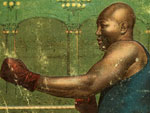
A companion to Ken Burns's film of the same name, Unforgivable Blackness provides an extensive look into issues surrounding race relations, sports, and definitions of freedom during the Progressive Era. In the documentary, Burns delves into the life of Jack Johnson, the first African American Heavy Weight Champion of the World. Johnson is explored as a man unapologetic for his strength, dominance, and defiance of society’s "rules."
This well-designed website has appeal for those teaching a variety of subject matter and content at the high school level. Background information is plentiful for those unfamiliar with early 20th-century boxing history, and sections are written at an appropriate Lexile level for high school use. Fight of the Century includes an interactive link filled with photographs, music, newspaper excerpts, political cartoons, and six audio clips (Flash Player required). Discussions of political cartoons and the depictions of African Americans during the early 1900s may be necessary before viewing Fight of the Century with students. Primary sources are plentiful throughout, including full text of the Mann Act, as well as Johnson’s FBI files.
Ghost in the House and Sparring provide information concerning four of Johnson’s contemporaries, including boxers Joe Louis and Sam Langford. Knockout also details Johnson's dalliances with a number of white women, which led to his conviction under the Mann Act. While important to the overall discussion of race relations, this section and coinciding discussions should only occur with more mature high school groups. An additional section, For Teachers, includes 10 lesson plans that may be used in a range of classroom settings—from math and civics, to history and sociology. Lesson plans are well thought out and descriptive, yet still leave room for open dialogue and connections with relatable current events. The website was last updated in 2005, which has resulted in a lost connection with three of the eight website links listed under the Resources section.
Overall, this website provides an in-depth and user-friendly overview for those interested in connecting issues of race relations and the Progressive Era into their classrooms.
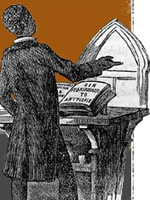
This extensive companion to the PBS documentary of the same name provides interpretive and primary material on the history of African-Americans during slavery and Reconstruction, including essays, personal narratives, original documents, historical readings, and lesson plans. The "Time and Place" chronology of slavery and Reconstruction places the main events of U.S. history relating to African Americans between 1619 and 1881 in their historical context. "Slave Memories" allows visitors to hear the voices of African Americans recorded by the Works Progress Administration (WPA) on their experiences in slavery and Reconstruction. "Resources" includes 17 print resources, 23 books for children, and 30 websites related to slavery. "Slave Experience" allows users to explore slave life through the themes of legal rights and government; family; men, women, and gender; living conditions; education, arts, and culture; religion; responses to enslavement; and freedom and emancipation. Each features essays, historical overviews, original documents, and personal narratives.
A K-12 learning section features historical readings of narratives, slave stories and letters, student plays, links to 19 sites with primary sources, and six lesson plans for middle and high school. This website is a valuable resource for teachers as well as an excellent introduction and overview for those with an interest in the history of slavery and slave life in America.
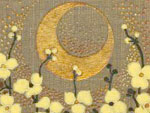
Paul Laurence Dunbar, born in 1872 in Dayton, OH, to a former slave and a veteran of the 55th Massachusetts Volunteers, was a poet and novelist known for his innovative use of dialect and colorful language, and is widely-recognized as the first African American poet to gain widespread international attention. This website makes available more than 200 of his poems, transcribed, listed alphabetically by title, and keyword searchable.
It also presents a fully browseable collection of more than 10 of his books, ranging in date from Oak and Ivy (1893) through Joggin' Erlong (1906,) and also including Lyrics of Lowly Life (1896), which includes the famous "Ode to Ethiopia," for which he gained national recognition. The website also contains the sheet music and transcribed libretto for three songs for which Dunbar wrote the words.
These works are accompanied by a selection of 11 photographs of Dunbar, his friends, and family, as well as 20 images of the covers of his books.
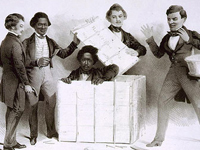
(Note: This website is now subscription-only.)
Designed for students, scholars, and librarians, this site provides access to thousands of primary source documents, maps, images, bibliographic entries, and subject entries drawn from reference resources in African American studies. Six published volumes furnish the majority of the resources: the Encyclopedia of African American History 1619-1895; Black Women in America, Second Edition; Africana, a five-volume history of the African and African American experience; the African American National Biography project, edited by Henry Louis Gates, Jr.; the Encyclopedia of African American Art and Architecture; and the Concise Oxford Companion to African American Literature.
These sources present a wealth of primary source documents, more than 1,000 images, and close to 100 maps, which illustrate events from 1500s South America through the Clinton Presidency. The site also includes more than 5,000 biographies and 3,000 subject entries on events and people, such as 19th-century African American midwives in the Western United States, prominent abolitionists, and charts on African American professional baseball. Useful for research, reference, and class projects on all aspects of African American history.
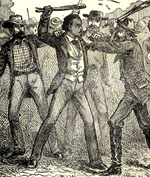
Offering 230 full-text documents, this collection presents the written lives of American slaves, including all known published slave narratives and many published biographies of slaves. Materials include autobiographical narratives of fugitive and former slaves published in a range of formats, such as broadsides, pamphlets, and books.
In addition, biographies of fugitive and formal slaves and fictionalized slave narratives are included. The collection includes well-known authors, such as Sojourner Truth and Frederick Douglass, as well as many authors less commonly known. Documents are available in HTML and SGML/TEI file formats and are accessible through alphabetical and chronological listings. Users can also view images of the covers, spines, title pages, and versos of title pages. Documents have been indexed by subject, but searches return materials in additional collections. An introductory essay by Professor William Andrews is available.
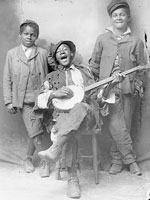
This site consists of nearly 300 images of Afro-Virginians dating from the 1880s to the early 20th century. Images are scanned from prints taken by father and son, George S. Cook and Huestes P. Cook, principally in the Richmond and Central Virginia area. Users can search the digital collection by keyword or browse images, including agriculture, education, recreation, religion, tobacco, and urban life. Documentation of labor is the most extensive, while the images of children ad education are fascinating. This site is valuable to those studying African-American life at the turn of the century or Virginia history.
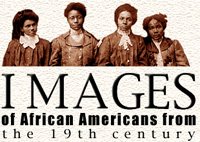
Part of the Digital Schomburg/New York Public Library project, this site contains roughly 500 images selected primarily from the Photographs and Prints Division of the Schomburg Center for Research in Black Culture at the New York Public Library. The items, selected by Marilyn Nance, freelance photographer, and Mary Yearwood, Curator of Photographs and Prints, include prints, original negatives, and transparencies from the 19th century, drawn from collections of family photographs, African-American school photographs, and personal collections. The images in this archive depict the social, political, and cultural worlds of their African American subjects. The site can be searched through 17 subject categories, such as family, labor, Civil War, slavery, social life and customs, and portraits. Under each subject category is a list of images with 15-word descriptions. This easily-navigable site also offers a keyword search engine through which collection items can be accessed. The images download quickly and are of good quality. Ideal for researching African American and 19th century history.